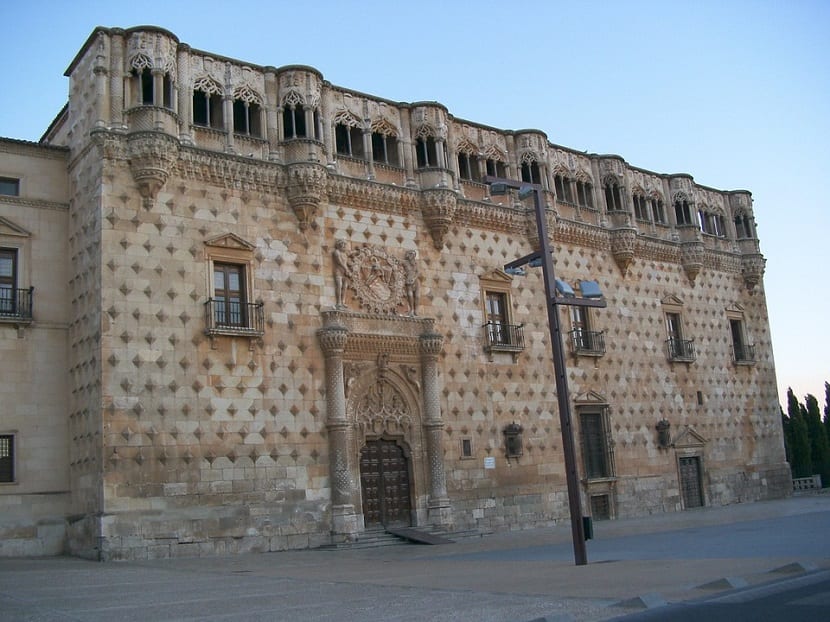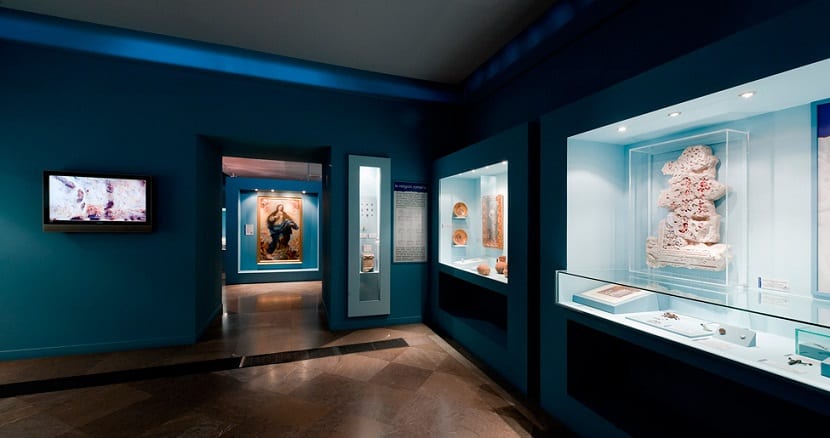
Image | Pixabay
The Palace of the Dukes of Infantado, in Guadalajara, is the most beautiful building in the Castilian-La Mancha city. Declared a monument at the beginning of the 1480th century, it is a work of Juan de Guas in collaboration with Enrique Egas in the design of the ornamentation and seconded by Lorenzo de Trillo that was built by order of Mr. Íñigo López de Mendoza, second Duke of the Infantado , around XNUMX.
There are many who have described it as unique in its kind, pointing to it as a very peculiar universal art sample, its façade being one of the best in terms of Spanish Renaissance palaces.
Attractions of the Infantado Palace
The wonderful façade is made of limestone expressly brought from Tamajón, a town located 51 kilometers from the city, which makes up a set of diamond points that are not frequent in Spain and a main door flanked by two columns and off-center, where the Mendoza coat of arms plays a special role. All richly decorated with resources incorporated from European Gothic such as spheres, taqueados, interwoven or florones and from Hispanic Mudejar such as muqarnas and epigraphs.
Along with the main door and the diamond tips, the upper gallery is another of the most interesting spaces as well as the courtyard of the building.

Image | Wikimedia Commons
Inside, the Patio de los Leones has Gothic patterns and the ensemble prevails over the quality of the details. It also includes opposing figures such as griffins and lions, an iconography typical of the easternmost Islamic tradition. The result is a beautiful staging that is complemented by an extensive garden, a recreational space extracted from the Al-Andalus palaces or the monasteries in which the Castilian monarchy used to use as a temporary residence. Its refinement is such that kings like Felipe II of Austria or Felipe V of Borbón chose it to celebrate their weddings there.
The Palace of the Infantado in Guadalajara is also famous for the Mudejar coffered ceilings that disappeared during the Civil War due to the damage caused by a bombing. However, some of the rooms that were decorated at the end of the XNUMXth century by Italian painters hired by the fifth Duke of Infantado as Rómulo Cincinato are still preserved.
The Cronos room, dedicated to the god of time and some symbols of the zodiac, the room of the battles of the military history of the Mendozas and the Atalanta and Hipómenes room, which recreates scenes from the popular Greek myth, stands out. In this last room there is a beautiful Carrara marble fireplace.
Guadalajara Museum

Image | Tourism Castilla - La Mancha
The Guadalajara Museum occupies part of the building to house the oldest provincial museum in Spain. It was created in 1838 and includes permanent collections of archeology, fine arts and ethnology, mainly.
The collection of fine arts is the oldest in the Museum of Guadalajara. It is made up of the assets confiscated from the Church since 1835, so the theme of the works is mostly religious. The collection is completed by donations and purchases of more than 200 pictorial and sculptural works that cover a period of time from the XNUMXth to the XNUMXst century.
On the other hand, the archeology collection is the largest in this museum and brings together pieces from excavations carried out in the province. The ethnography section is very interesting to learn about the popular customs of Guadalajara.
In turn, the Guadalajara Museum offers two permanent exhibitions: Transits, which exhibits the most relevant objects of its collections integrated in an anthropological and anthropological discourse. The Infantado Palace: the Mendoza and power in Castilla, which interprets the meaning and history of this family and their palace in the frescoed rooms created by Rómulo Cincinato.
It also hosts several temporary exhibitions throughout the year. As a curiosity, the rooms for temporary exhibitions were once the duke's rooms. In them the frescoes of the XNUMXth century and part of the rich coffered ceilings that decorated the ceilings are preserved.
Visiting hours
- Winter (from September 16 to June 14): Tuesday to Saturday from 10am. at 14pm. and from 16h. at 19pm.
- Summer (from June 15 to September 15): Tuesday to Sunday from 10am. at 14pm.
- Sundays and holidays: from 10am. at 14pm.
Precios de las entradas
- Overall: 3 euros
- Reduced: 1,50 euros